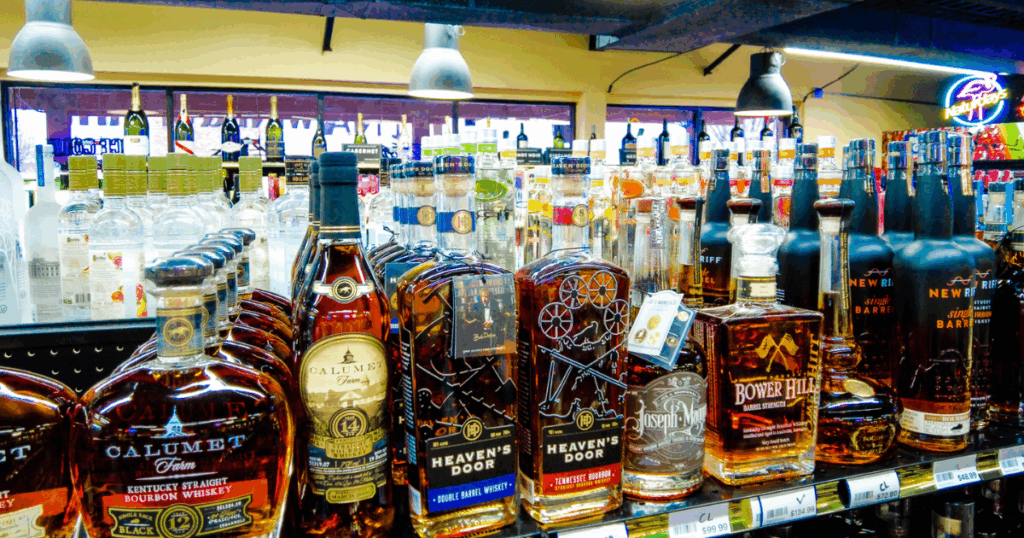-
Table of Contents
Global drinking customs are as diverse as the cultures they come from, each with unique traditions that reflect local history, social norms, and religious influences. These customs range from the ceremonial toasts of Western banquets to the intricate tea ceremonies of East Asia. In some cultures, drinking is a communal activity that strengthens social bonds, while in others, it is a solitary practice imbued with personal significance.
For example, in Russia, vodka toasting is a significant part of social gatherings, often accompanied by a heartfelt speech. In Japan, the pouring of sake for others is a sign of respect, and one should never pour their own drink. Spain is known for its late-night wine and tapas culture, while in South Korea, soju is often consumed with a ritual where the youngest at the table pours for the elders, using both hands as a sign of respect.
In Germany, particularly in Bavaria, beer is deeply rooted in the culture, with the traditional “Prost!” (cheers) and eye contact being essential during toasts. Meanwhile, in Scandinavia, the “skål” (a toast) is a central part of drinking culture, often accompanied by singing and communal drinking songs.
In some regions of France, wine is not just a beverage but a cultural icon, with rituals surrounding its tasting, serving, and pairing with food. In contrast, in the Andean regions of South America, sharing a communal bowl of chicha (a traditional corn beer) is a way to honor Pachamama (Mother Earth) and ancestral traditions.
These customs are not only about the act of drinking but also about the social and cultural contexts in which drinking takes place. They can serve to welcome guests, solidify friendships, mark special occasions, and even seal business deals. Understanding these traditions can provide a deeper insight into the values and practices of different societies around the world.
Exploring Global Drinking Traditions: A Journey Through Cultural Customs and Social Rituals
Exploring Global Drinking Traditions: A Journey Through Cultural Customs and Social Rituals
Embarking on a journey through the world’s drinking customs is like flipping through the pages of a vibrant cultural scrapbook, each page revealing a unique tradition that tells a story about the people and their way of life. From the clinking of glasses to the ceremonious pouring of libations, these rituals are steeped in history and often carry deep social significance.
In Japan, the practice of nomikai, a drinking party that typically takes place at an izakaya, is an integral part of professional and social culture. It’s a space where hierarchy is temporarily set aside, allowing for free-flowing conversation and bonding. The pouring of drinks is a sign of respect, and one should never pour their own drink but instead wait for someone else to fill their glass, reciprocating the gesture when their companion’s cup runs low.
Transitioning to Scandinavia, the tradition of skål – a toast said before drinking – is a communal act that involves eye contact and a collective acknowledgment before sipping one’s beverage. This ritual, deeply rooted in Viking history, is a symbol of trust and camaraderie. The eye contact is said to be so important that failing to look your drinking partners in the eye can be seen as a sign of distrust or disrespect.
Meanwhile, in Russia, vodka is more than just a drink; it’s a symbol of national pride and hospitality. When vodka is served, it is often accompanied by a heartfelt toast. The Russian word for health, “за здоровье” (za zdorovie), is frequently heard as glasses are raised. It’s customary to drink the shot in one go, followed by a bite of a pickle or a piece of bread to soften the blow of the strong spirit.
Venturing into the warm climes of Spain, one might encounter the sociable tradition of the botellón, a gathering in public spaces where friends share drinks they’ve brought from home. This custom is particularly popular among young adults and is seen as a way to enjoy each other’s company without the confines of a bar or the expense that comes with it.
In Korea, drinking soju comes with its own set of etiquettes. When an elder pours soju for you, it is polite to hold your glass with both hands as a sign of respect. Turning your head away slightly while taking a sip is also a common practice, especially when in the presence of someone significantly older or of higher status.
Across the Atlantic, in the vineyards of Argentina, the wine culture is celebrated with the asado, a traditional barbecue that often features Malbec, the country’s flagship wine. Sharing a bottle of wine at an asado is not just about the drink itself but about the experience of coming together, sharing stories, and enjoying the simple pleasures of life.
In Ghana, the pouring of libations is a spiritual act that involves offering a drink to the ancestors before any significant event or celebration. This ritual, known as “nsamanfo,” is performed by an elder who will pour the drink onto the ground in a symbolic gesture of reverence and remembrance.
As we traverse the globe, it becomes evident that drinking customs are as diverse as the cultures they represent. Each tradition carries with it a history, a set of values, and a way of connecting with others. Whether it’s the meticulous Japanese nomikai, the heartfelt Russian toast, or the convivial Spanish botellón, these customs remind us that the act of sharing a drink can transcend mere consumption and become a meaningful social ritual that fosters unity and friendship. So the next time you raise a glass, remember that you’re not just sipping on a beverage; you’re partaking in a rich tapestry of global traditions that celebrate the joy of communal experience.
Unique Beverages and Global Spirits: Discovering the World’s Most Unusual Drinking Customs

Title: Global Drinking Customs: What are Unique traditions from around the world.
As we traverse the globe, we uncover a tapestry of unique beverages and global spirits, each with its own story and tradition. These drinking customs offer a window into the cultural heart of societies, revealing much about their history, values, and way of life. From the clinking of glasses to the ceremonial toasts, every culture has its own way of saying “cheers.”
In Japan, the practice of drinking sake, a rice wine, is steeped in ritual. It is often served in a special ceremony called “kagami biraki,” where the lid of the sake barrel is broken open with wooden mallets. This act symbolizes opening to harmony and good fortune. When sharing sake, it is customary to pour for others rather than for oneself, a gesture of respect and camaraderie.
Venturing into Scandinavia, we find the fiery spirit of aquavit. This potent drink, flavored with herbs like caraway or dill, is central to the Swedish “snapsvisa,” a tradition of singing before taking a shot during festive gatherings. The songs are short and lively, intended to prepare the palate and the spirit for the warmth of the aquavit as it is sipped or gulped down.
Meanwhile, in Russia, vodka is more than just a beverage—it’s a symbol of national pride. The Russian custom of “zakuski” involves a spread of appetizers to accompany the vodka, which is consumed neat—no mixers, no ice. Toasts are an essential part of the drinking culture, often deep and heartfelt, reflecting the Russian soul’s intensity. It is considered rude to refuse a drink unless you have a serious reason, and each toast is followed by a round of vodka.
Crossing continents, we arrive in Ethiopia, where coffee holds a place of honor. The Ethiopian coffee ceremony is an elaborate process that can last several hours. Green coffee beans are roasted over an open flame, ground by hand, and then brewed in a clay pot called a “jebena.” The coffee is served in small cups, and it is customary to partake in at least three rounds, each with its own name and significance, symbolizing transformation and friendship.
In South America, particularly in Argentina and Uruguay, the drink of choice is mate (pronounced mah-teh), a tea made from the leaves of the yerba mate plant. Drinking mate is a communal affair, with a gourd passed around a circle of friends, each person sipping through a metal straw called a “bombilla.” The ritual is a sign of trust and bonding, as the gourd is shared from mouth to mouth, with the host taking the first sip to ensure the quality of the brew.
Lastly, let’s not forget the unique tradition of “tostadas” in Mexico, where tequila is the spirit of choice. Rather than simply shooting it, Mexicans savor tequila by sipping it alongside a “sangrita,” a chaser of tomato juice mixed with orange juice, lime, and spicy chili peppers. This combination balances the tequila’s heat and enhances its complex flavors.
These customs, from the Japanese sake-sharing to the Ethiopian coffee ceremony, are more than just ways to consume beverages. They are rituals that foster connection, celebrate heritage, and create a sense of belonging. As we explore these global drinking customs, we not only discover new flavors and experiences but also gain a deeper appreciation for the diverse ways in which people around the world come together to raise a glass. Cheers to that!
Toasting Worldwide: The Fascinating Diversity of Drinking Traditions and Cultural Customs
Title: Toasting Worldwide: The Fascinating Diversity of Drinking Traditions and Cultural Customs
When it comes to raising a glass, cultures around the globe have developed a rich tapestry of traditions that reflect their unique histories, values, and social customs. From the clinking of glasses to the utterance of toasts, the act of drinking is often about more than just the beverage—it’s a ritual that fosters camaraderie, honors guests, and celebrates life’s milestones.
In Japan, the practice of drinking is deeply ceremonial, with the pouring of sake, a rice wine, being a common sight at various social gatherings. The tradition of “kampai,” which means “empty the glass,” is akin to saying “cheers,” and it’s customary for diners to wait for everyone to be served before taking the first sip together. Moreover, it’s considered polite for individuals to pour drinks for one another rather than for themselves, emphasizing the importance of group harmony and respect.
Venturing into Scandinavia, you’ll discover the “skål,” a hearty toast that accompanies the communal enjoyment of spirits like aquavit. This tradition is often accompanied by eye contact and a nod, signifying trust and equality among the drinkers. The Vikings are said to have originated this practice, toasting to their gods and fallen warriors, and it has since evolved into a gesture of goodwill among friends and family.
Meanwhile, in Russia, vodka is the centerpiece of many social occasions, and toasting is an art form. It’s common for a series of toasts to be made throughout a meal, starting with a toast to health and followed by toasts to parents, love, and anything else deemed important by the host or guests. Each toast is a mini-speech, often heartfelt and poetic, and it’s considered impolite to refuse a drink unless you have a valid reason.
Crossing continents to Africa, in countries like Ethiopia, the traditional honey wine known as “tej” is often shared during festivities. The communal drinking of tej from a shared vessel called a “berele” symbolizes unity and friendship. The pouring of the drink is also significant, as it’s done from a height to aerate the wine, enhancing its flavor and demonstrating the server’s skill.
In South Korea, the drinking culture is infused with etiquette. When receiving a drink, it is customary to hold the glass with both hands as a sign of respect, especially if the person pouring is older or of higher social status. The phrase “geonbae,” which translates to “empty the glass,” is commonly used, and similar to Japan, it’s polite to turn your head away and cover your mouth with your hand when taking a drink in the presence of elders.
Down in Argentina, the sharing of yerba mate, a traditional caffeinated drink, is a bonding experience. The mate is prepared in a hollowed-out gourd and sipped through a metal straw called a “bombilla.” The gourd is passed around in a circle, with each person taking a turn to drink until the mate is finished, symbolizing trust and community.
These customs, while diverse, all share a common thread: they are expressions of hospitality, friendship, and the human desire for connection. Whether it’s a boisterous “cheers” in an English pub or a solemn “salud” over a glass of Spanish wine, these drinking traditions are a window into the soul of a culture. They remind us that, despite our differences, the act of sharing a drink can bring us together, transcending language and borders to celebrate the universal joys of companionship and life itself.
Q&A
1. Japan: In Japan, it is customary to never pour your own drink when in a group; instead, you pour for others, and they pour for you. It is also polite to wait for everyone to be served and for a toast to be made before drinking.
2. Russia: Vodka is a significant part of Russian culture, and it is often consumed straight, without mixers. When toasting, it is traditional to make eye contact, and it is considered rude not to finish your glass after a toast is made.
3. Germany: In Germany, particularly in Bavaria, beer is a staple, and the traditional way to enjoy it is in a beer garden or during Oktoberfest. A common custom is to clink glasses with everyone at the table while maintaining eye contact and saying “Prost!” before taking a sip.Global drinking customs are diverse and reflect the unique cultural traditions and social norms of different societies. From the communal vodka toasts in Russia, which often involve a series of speeches and proclamations, to the Japanese practice of never letting a companion’s glass go empty, these customs foster social bonding and respect. In Spain, people often enjoy chupitos, small shots of liquor, after a meal, while in South Korea, it is customary to turn away from elders when taking a drink. The Scandinavian countries have a tradition of singing songs before taking shots of aquavit, and in Germany, particularly in Bavaria, beer is commonly consumed in large steins and is central to many social events like Oktoberfest. In France, wine is deeply embedded in the culture, with specific rituals around tasting and pairing with food. Meanwhile, in Argentina and Uruguay, sharing a gourd of mate, although not alcoholic, is a significant social ritual. These customs not only reflect the cultural values and social etiquette of each region but also contribute to the richness and diversity of global traditions surrounding the consumption of beverages.






